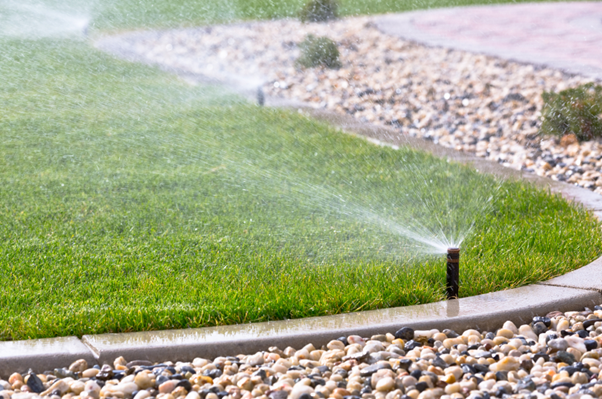A beautiful garden is the result of a considerable amount of time, effort, and resources. One of the most crucial components of maintaining a healthy and lush lawn is watering it correctly. To simplify the watering process, you may install a garden sprinkler system. However, installing and maintaining a sprinkler system requires some technical competency and expertise. This blog post will share some essential tips that will help you install and maintain a sprinkler system for your garden effortlessly.
1. Plan your system carefully
Before you begin digging up your lawn, it’s essential to plan your system carefully. Consider the size and shape of your garden, the water pressure, and the type of sprinkler heads you will need. You may also want to consider a timer system, which can help you save both water and money.
2. Choose the right sprinkler heads
Different sprinkler heads have different water distribution patterns, so you will need to choose the right one for your garden. Some heads have a fixed spray pattern, while others can rotate, oscillate, or have adjustable patterns.
3. Install the system correctly
Ensure that your garden sprinkler system is installed correctly by burying the pipes deep enough to avoid being damaged by lawnmowers and other garden equipment. It’s also essential to ensure that all joints and connections are watertight.
4. Use a backflow prevention device
A backflow prevention device is essential for ensuring that contaminated water does not flow back into your home’s plumbing. This device should be installed at the connection to your main water supply. Many cities and states require the installation of backflow prevention devices, so check with your local water authority before installing your system.
5. Adjust your system for seasonal changes
Adjusting your system for seasonal changes will ensure your lawn receives the right amount of water all year round. For example, during the hot summer months, you may need to increase the watering time, while during the winter, you may need to reduce it.
6. Maintenance is key
When it comes to garden sprinkler systems, maintenance is the key ingredient for keeping them running smoothly. You don’t want to wait until there’s a major problem with your system before taking action. Regular maintenance is essential for ensuring that your garden sprinkler system is running efficiently. It might mean cleaning or replacing clogged sprinkler heads, checking pipes for leaks, or adjusting the system to meet the changing needs of your lawn.
7. Don’t waste water
Minimize water waste by ensuring that your sprinkler system operates during the early morning or late evening hours when temperatures are cooler, and there is less wind. You should also avoid overwatering your lawn, as this can lead to root rot and other problems.
8. Use high-quality materials
When installing your garden sprinkler system, choose high-quality materials that are designed to last. This can include pipes that are resistant to cracks and leaks, as well as sprinkler heads that are designed to withstand the elements.
9. Consider hiring a professional
If you lack the knowledge or experience to install or maintain your sprinkler system, it may be worthwhile to hire a professional. They can ensure that your system is installed correctly, advise you on the best types of sprinkler heads to use for your garden, and provide regular maintenance and repairs.
10. Save money with efficient water usage
By using efficient watering practices, you can save money on your water bill and reduce your environmental impact. Consider using a smart sprinkler controller that adjusts your watering schedule based on weather conditions, soil type, and lawn size, or install rain sensors that turn off your system when it’s raining.
Conclusion:
A garden sprinkler system can help you maintain a healthy and lush lawn, but it’s essential to install and maintain it correctly. By following the above practical tips, you can ensure that your system is efficient, cost-effective, and easy to maintain. Plan carefully, choose the right sprinkler heads, install your system correctly, and regularly maintain it to maximize its benefits. By using efficient watering practices and high-quality materials, you can ensure that your system lasts for years to come.
Related posts
Recent Posts
Advertisment



Social Media